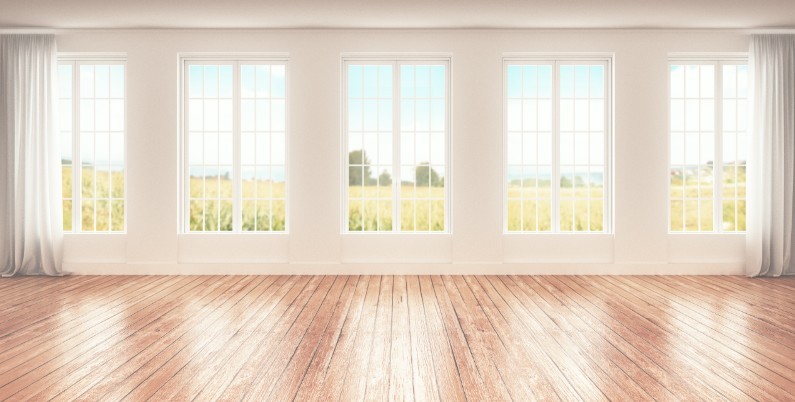Shopping for windows for your home can become a stressful task, especially when you don’t have prior information of Kansas City window types, and don’t understand the jargon used. But it does not have to be that way. In this definitive guide, you will get all the information on the different types of windows and find essential pro-information that you’ll need to breeze through shopping, selecting and having your windows installed.
Beginner’s Lesson on Kansas City Window Types
Two of the most important words that you need to understand clearly when it comes to windows are New Construction Windows and Replacement Windows.
New Construction Windows are designed with a nailing fin that allows for the window to be secured in a wall’s rough opening. Therefore, new construction windows are intended for use in brand new homes or in homes where either a new addition is being built or the studs of the walls of an existing window have been removed
Kansas City Replacement Windows, on the other hand, replacement windows are designed and measured to fit into a pre-existing window opening. They are easily installed into existing window frames using the fasteners around the window assembly, thus most suitable for use when updating existing windows.
When it comes to the material of windows the most popular choices are wood windows and vinyl windows. Both materials are excellent options, but they have different attributes and functionality.
Wood vs Vinyl Windows

Wood windows are popular mainly because of their aesthetic appeal and durable nature. The wood can be stained or painted in any color to perfectly blend in with the rest of the decor of your house. Wood windows are however costly, require high-maintenance to remain appealing and can splinter or rot as time goes by.
On the other hand, vinyl windows are more affordable compared to wood windows because they are made of the polyvinyl chloride (PVC) material that has low manufacturing costs. Vinyl windows do not require a lot of maintenance when it comes to their appearance and will not rot or splinter over time. They are however not as durable compared to wood windows, can warp with expansion and are not considered aesthetically appealing due to their plastic appearance.
As and added bonus – fiberglass windows are a popular choice as well.
Main Parts of a Window
Windows can either be fixed meaning they can’t open or operable meaning they can open. To avoid any confusion when talking about windows, it is also important to know the correct names for different parts of a window. Below is a brief glossary of the parts of a window.

1. The Frame
Refers to the entire framework that supports and surrounds the window. It comprises of:
- Head Jamb — is the horizontal piece that forms the top part of the window frame
- Side Jambs — are the vertical pieces that form the sides of the window frame
- Sill — is the horizontal piece at the base of the window frame
2. Glazing/Glass
Window glazing is the framed sheet of glass within the window frame.
3. The Sash
Window sash refers to the horizontal and vertical framework that holds the glass of the window in place. This is the movable part of a window. Rail refers to the horizontal piece of a window sash while stile refers to the vertical piece of a window sash
4. Grilles
These are decorative cross pieces that visually divide the window into panes. They can either be suspended between the glass or made to snap off easily.
The 6 Most Popular Types of Windows

Casement Windows
Casement windows are operable side-hinged windows that open by swinging outwards and are operated using a hand-crank. They are versatile when it comes to design as you can have them constructed with a single solid glass to offer unobstructed views or have them customized with grilles or art glass to satisfy the aesthetic appeal you want.
When closed, casement windows create a complete seal therefore effective in noise reduction and minimal draught. These specific qualities of casement windows make them most suitable for use in bedrooms spaces.

Double-Hung Windows
Double-Hung windows feature upper and lower operable sashes that slide vertically to open and close. A majority of the double-hung window models have sashes that tilt inward, allowing you to clean the panes from inside the house.
Other than creating a classical appearance of a room, double-hung windows are highly effective when it comes to air circulation. This because when both sashes are open warm air leaves the room through the top opening while cool air flows in through the bottom opening. Double-hung windows are perfect for rooms used for hosting a significant number of people such as the family room.

Single-Hung Windows
The only differentiating aspect of single-hung windows from double-hung windows is that for single-hung windows, the lower sash is operable while the upper sash is fixed. Single-hung windows still have a classical appearance effect and are good for ventilation but not to the excellence of double hung windows.
Single-hung windows are however more affordable thus perfect as general windows around the house.

Picture Windows
Picture windows are typically single frame fixed windows whose main purpose is to allow maximum light into a room and provide panoramic or unobstructed views. Picture windows are versatile and can be constructed in different sizes, shapes, and design.
Small picture windows are suitable to brighten up staircases and can be installed on top of the door to increase the natural lighting in the doorway. Large windows are perfect for showcasing the amazing views from your house.

Awning Windows
Awning windows are top-hinged windows that swing outward to open and are operated using a hand-crank. Because of their design, awning windows are perfect for homes in raining climates as they can be opened during the rain to allow air circulation in rooms without allowing the rain in. Awning windows can also be installed in rooms with picture windows to allow for ventilation.

Gliding Windows
Gliding windows are designed with one or more moving panels that slide horizontally to open and close.
Gliding windows offer a relatively large expanse of solid glass that delivers unobstructed views. They are a great option for offering good ventilation and maximized views from a room that overlooks beautiful scenery.
Other Common Types of Windows
Hopper Windows
Hopper windows are normally hinged at the bottom, therefore, opening from the top to tip downwards into the room. They are an efficient and highly-versatile window type for compact spaces such as the basement or bathroom.
Hopper windows also provide great insulation as they create a complete seal against the frame when fully closed.
Egress Windows
Egress windows are purposefully designed to offer an escape route from a room if the exit from the door is not an option. They are mostly installed in basements.
Jalousie Windows
Jalousie windows are designed to open just like a set of blinds. They consist of many slats of glass that tilt to one side to open Jalousie windows are operated using a lever and allow a great amount of ventilation when open and good lighting when closed.
Looking for the Best Window Types For Your House?
With all this information you should be able to find the right window for your home based on design and functionality. Whether you are renovating or building a new home, the perfect window should not only enhance the appearance of your home but also serve its excepted purpose.
But remember selecting the type and style of window is only half the effort. Finding the right window installation contractor is the other half. Yes, you can have the right windows chosen, but if they are not installed as they should be, then the result will not meet your expectations and style. So don’t let your efforts go to waste, partner up with a professional window supplier and a qualified home improvement company to install your windows.

